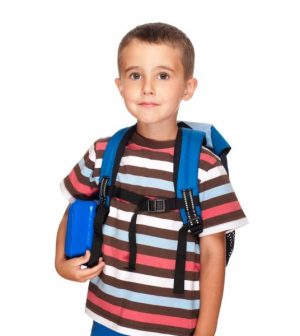- Navigating Your Midlife Crisis: Embracing New Possibilities
- City Raccoons Showing Signs of Domestication
- Mapping the Exposome: Science Broadens Focus to Environmental Disease Triggers
- One Week Less on Social Media Linked to Better Mental Health
- Your Brain Changes in Stages as You Age, Study Finds
- Some Suicide Victims Show No Typical Warning Signs, Study Finds
- ByHeart Formula Faces Lawsuits After Babies Sickened With Botulism
- Switch to Vegan Diet Could Cut Your Greenhouse Gas Emissions in Half
- Regular Bedtime Does Wonders for Blood Pressure
- Dining Alone Could Mean Worse Nutrition for Seniors
Building a Better Backpack

A well-organized backpack helps ensure that your child has everything needed for school. Problems start when it becomes overloaded. Lugging around a heavy pack can lead to bad posture, back pain and worse.
The problem is so pervasive that the American Occupational Therapy Association created National School Backpack Awareness Day. It’s held every September to share ideas to keep kids safe.
You can protect your kids by making sure that their packs are properly fitted and properly loaded. Here’s how.
When shopping for a backpack, make sure that its width and length match each child’s torso. It shouldn’t hang more than 4 inches below the waist. The bottom of the pack should closely align with the curve of the child’s lower back — if it wobbles back and forth, spine problems can develop.
Other features to look for include wide, padded and adjustable shoulder straps. A waist, hip and/or chest belt will more evenly distribute the load. A backpack with many compartments allows for its content to be well spaced throughout. For traffic safety, the pack should have reflective accents that will help cars and other vehicles see your child in low light conditions.
Before loading the pack, have your child put it on and adjust the straps for a snug fit. Put the heaviest items at the back of the pack. Arrange the contents so items won’t slide around as your child moves.
When filled, a backpack shouldn’t weigh more than 5% to 10% of your child’s weight, so 8 pounds for a child who weighs 80 pounds. Don’t guesstimate — test it on your scale. If the pack is too heavy, take out a book or another item that your child can carry in his or her hands or stow in a locker.
Finally, make sure your child wears the pack on their back and not swung onto just one shoulder.
More information
Learn more about backpack awareness day and how to spread the word yourself.
Source: HealthDay
Copyright © 2025 HealthDay. All rights reserved.










